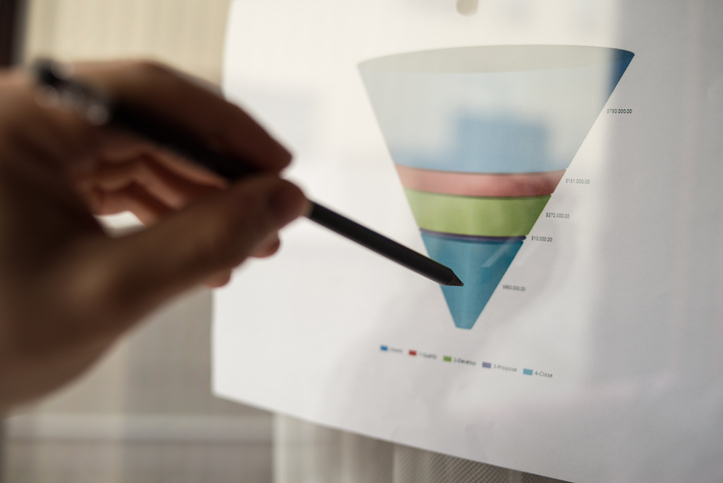Perfecting a Conversion Rate Optimization (CRO) strategy can take brands years and plenty of testing. It’s a crucial piece of an overarching digital marketing strategy, with the overall goal being to increase the percentage of users who perform a desired action on a digital property. Often, marketers place the most value in optimizing the final conversion or touchpoint in the customer journey (e.g., checking out or registering), but there are flaws in this ideology.
In addition to this belief, brands often assume that the best way to improve conversion rates, is by administering a multitude of tests across their digital ecosystem to find gaps and areas for improvement. These tests, however, are usually preformed without a pre-determined, structured, and methodical testing strategy. Problems can arise when brands realize that even altering the color of a button, or the title on the page, can impact their overall conversion rates. It’s also assumed that it’s better to drive as much traffic to the site or pages as possible in order to capture more customers. However, by flooding pages with poor traffic, it merely pushes users to a page they aren’t ready to convert on – negatively impacting conversion rates.
So, what’s a brand to do? Well, it begins with looking at the big picture and more specifically, each portion of the funnel. Below we’ll dispel common beliefs about CRO and what it really means to implement a robust strategy that effectively captures the right customers across each stage of the buying journey.
CRO Is More Than The “Last Mile”
The answer to that question isn’t a simple one, but it involves understanding that the “last mile” or that last touchpoint, isn’t the key indicator to whether you’ve implemented a strong strategy. This may come as a shock, but the philosophy behind the last click is flawed. That’s because every touchpoint along the consumer journey has a direct impact on the buyers next steps (or lack thereof). This means it’s imperative to analyze the entire funnel, all the way down to that coveted conversion point to flag any holes that will disrupt the user’s journey. And while it may seem easy to make small adjustments here and there, those adoptions won’t produce sustainable outcomes. Marketers should plan to optimize the entire funnel and play with a lever of scale.
Top of the Conversion Funnel
The top of the funnel is where you capture the most visitors. Here, marketers should be looking to understand customer needs and behaviors. Strong content, a great user experience, and a solid SEO foundation will capture the right people who will continue to move them down the funnel.
It’s important to optimize for foundational elements of the site experience like mobile friendliness, accessibility, and page load speed to attract visitors. Intuitive IA and navigation are important tools that will help visitors orient to the site and find what they are looking for rather than leaving.
What to optimize for:
- Organic ranking and traffic from prioritized queries
- Bounce rate comparisons by source, page, device type
- Page load speed
- Mobile friendliness and accessibility scores
Helpful tools:
- Chat Bots (to understand what users are looking for)
- Heat and click maps (to identify where users are/are not clicking)
- User testing and surveys (to understand needs and gaps in the site experience)
Middle of the Conversion Funnel
At this point, customers are deep in consideration mode. Here, brands should focus on return visits and engagement, continuing to educate the viable leads they’ve captured and remove any remaining friction points hindering a user’s journey. Smart retargeting (think targeted ads on social platforms) and 1:1 communications help pull visitors back to the site to pick up where they left off. Introducing personalized recommendations based on previous behaviors and interests is a great way to increase engagement.
What to optimize for:
- Click-through-rate (CTR) from retargeting campaigns and 1:1 communications
- Return site visits
- Engagement metrics like session duration and pages per session
Helpful tools:
- Personalization platforms like Salesforce Marketing Cloud’s Interaction Studio
Bottom of the Conversion Funnel
If done correctly, these steps will push the customer to that final stage – the conversion. It’s here that CRO optimizes for that “last mile.” Businesses need to understand that multiple sessions and time will impact the buyer decisions especially with higher considered purchases. This is where A/B testing of landing page design, “check-out” flows and offers, can lead to sizable gains for conversion rates. Using funnel visualization tools can also help your team identify specific points in the conversion flow where users are getting stuck or abandoning the process.
What to optimize for:
- Conversion rate
Helpful tools:
- A/B test platforms like Optimizely
- Conversion funnel analyzers like Google Analytics’ Funnel Visualization Tool
The Takeaway: Don’t Boil The Ocean
In the end, CRO is not one thing nor the other; Nor is it manageable with just one tool or the other. Implementing an effective strategy comes down to commitment and allowing focus, which means that starting out small is okay.
These small adjustments, a methodical testing strategy, a focus on content, and the user pathway and site experience, are all crucial factors when it comes to evaluating your CRO approach. To put it another way, each step of a strong CRO practice is done in parallel and places a focus on the entire funnel. This is in part due to the many levers available to be pulled at each stage of the journey. So, be sure you’re conducting a full funnel analysis, assessing each step of the buying journey, and presenting the right content, at the right time, in the right way. All these things will ensure your brand’s CRO approach is optimized for success.


